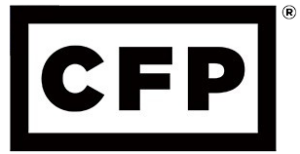The Inflation Reduction Act signed in August 2022 has little to do with inflation but instead is hyper-focused on providing tax and labor incentives related to clean energy and national manufacturing. To pay for these incentives and tax breaks, the bill promises funding to the IRS to ensure that lower-to-middle class filers have the resources to take advantage of any and all breaks while simultaneously auditing and increasing taxes on corporations and households reporting $400k+ in income.
The tax code shouldn’t change much for lower-to-middle class filers apart from taking advantage of any consumer level incentives for buying an electric vehicle, adding solar panels, etc. However, those that can normally afford an electric vehicle or home (let alone the breakeven point on solar panels) generally skew upper middle-class to wealthy. Also, using a service like TurboTax does a decent job at bringing a DIY filer through potential deductions and credits, so I’m not sure how many will be utilizing education and resources via the IRS – but being able to get someone to answer the phone will be wonderful!
Bill Highlights:
- Consumers will have a decade to decide on home solar panels in order to receive a 30% non-refundable credit off federal income taxes. There’s no dollar limit on those expenses, they just must be considered eligible.
- The tax incentive for the purchase of electric vehicles has been modified. Just as before, there is a non-refundable credit for up to $7,500, but originally there was a limit of 200k cars eligible under each manufacture. As you can imagine, Tesla has exceeded this threshold. This threshold has been lifted, but now a requirement is that the car’s final assembly occurs in North America. There is an ability to split the credit into two parts which then allows more vehicles to qualify for at least some level of tax credit.
- To qualify for the first $3,750, a certain percentage of the critical minerals used in the battery must be extracted from the U.S. or a country that the U.S. shares a free trade agreement with.
- The second half of the $7,500 considers where the battery components come from. To qualify for the maximum tax credit allowance, most of the battery components must be made in North America. The required percentages will gradually increase over the coming years.
- There will be “Make it in America” provisions encouraging American-made equipment for clean energy production. The law provides expanded clean energy tax credits for wind, solar, nuclear, clean hydrogen, clean fuels, and carbon capture. Implementation of this program and funding will be largely aimed at communities and corporations who support clean energy use, manufacturing, and supply chains. Ideally though this investment creates high-skill, well paying jobs which provides opportunities to the average American.
- In addition, there are tax credits for energy efficient commercial buildings that will include bonus credits for businesses that pay prevailing wages and hire registered apprentices vs cost-cutting contractors. Penalties have been added for those who agree to the program but fail to pay prevailing wages.
- A 15% minimum corporate tax on the largest profitable corporations.
- A 1% surcharge on corporate stock buybacks, to encourage businesses to invest in the aforementioned programs vs funneling profits to shareholders. FYI – shareholder translates to anyone owning stock in a company like Apple, so while the measure is focused on sticking it to corporations it may result in a squeeze on returns for an average investor.
- Also noteworthy but off-theme are provisions to update Medicare. The bill addresses Part D by phasing in a cap for out-of-pocket drug costs. For example, there is now a $35 cap for a month’s supply of insulin. Medicare will also be able to negotiate prices for high-cost drugs for the first time ever. I will elaborate more on this update in a dedicated Medicare blog.





This Post Has 3 Comments
Pingback: Are Solar Panels a Worthwhile Investment? - North Andover Financial Planner | Powwow, LLC
Pingback: All you need to know about 2023 Tax-Related Adjustments to Premiums, COLAs, Brackets and Thresholds - North Andover Financial Planner | Powwow, LLC
Pingback: All you need to know about 2025 Tax Adjustments to Premiums, COLAs, Brackets and Thresholds - Powwow, LLC